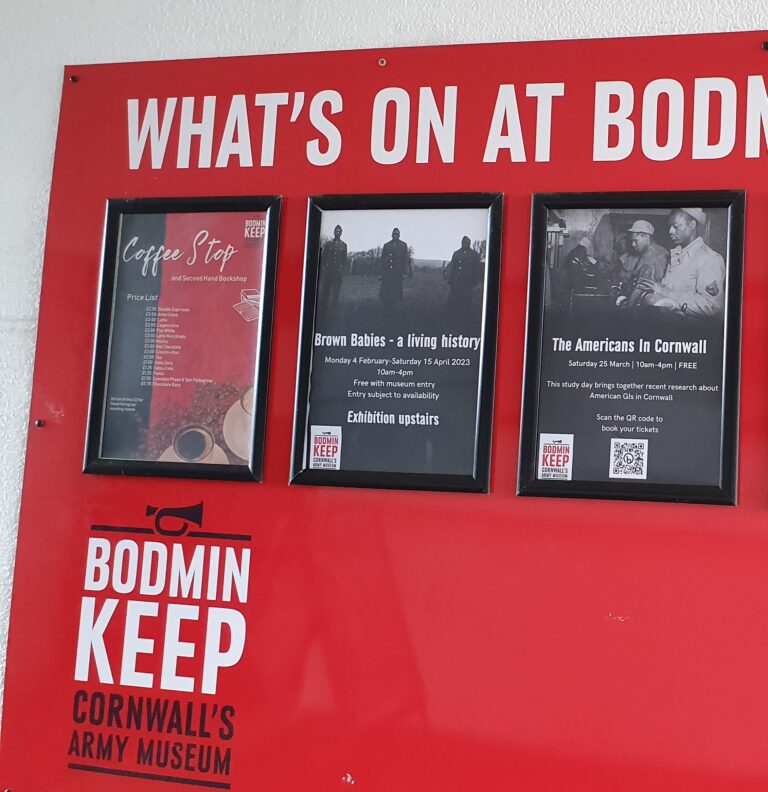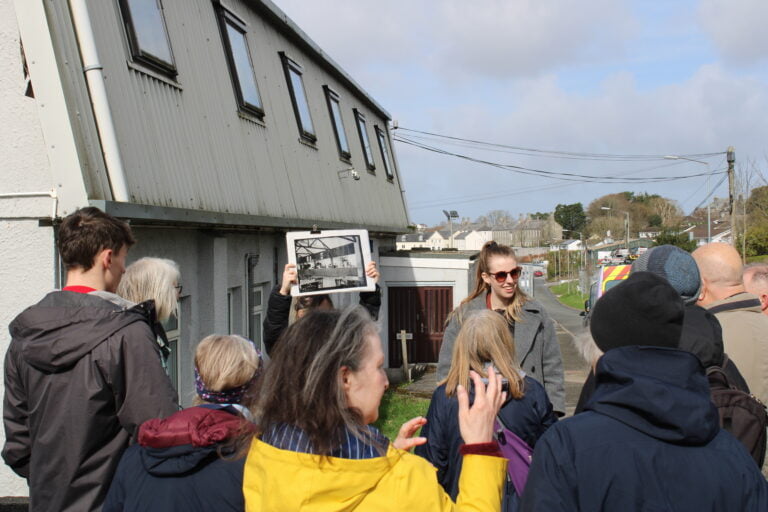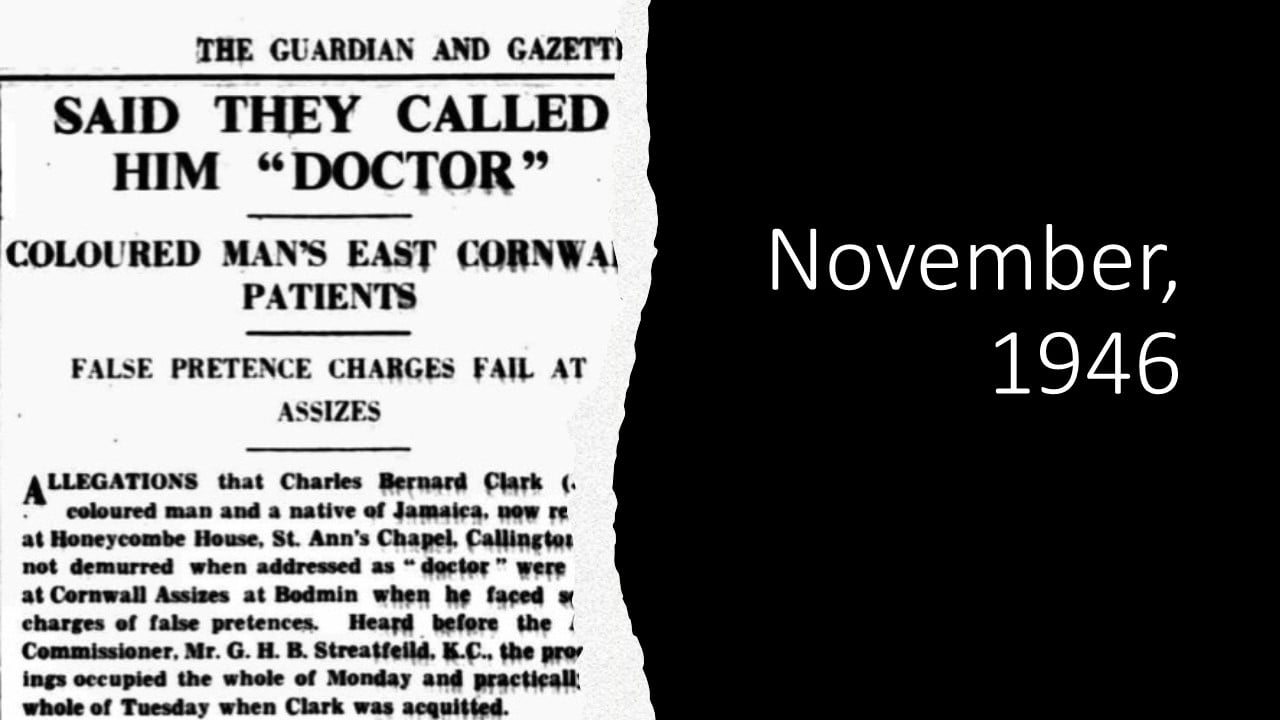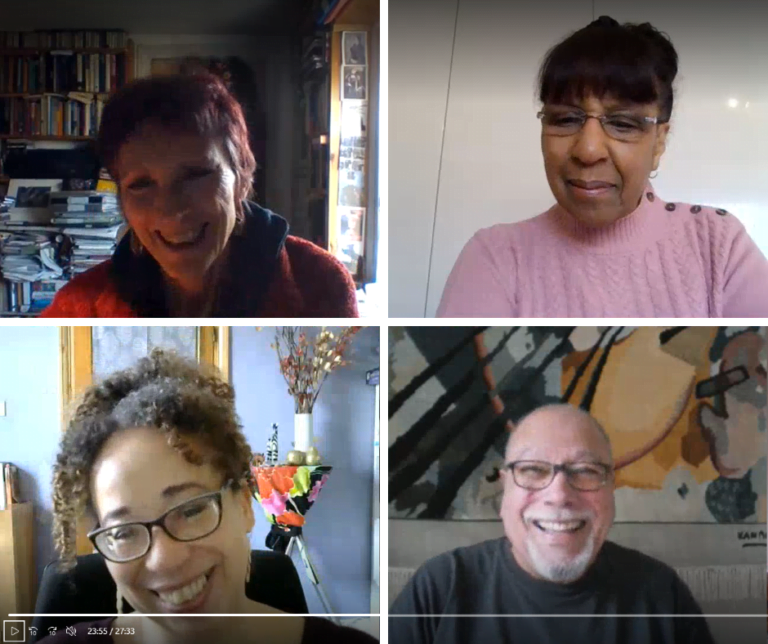Unearthing Jim Crow in the UK
During a visit to Bodmin Keep in Cornwall, we heard how African American GIs suffered segregation in the UK – and shared the little known story of a Jamaican doctor in the county in the 1940s.

Black GIs in Cornwall
Our collaboration with Bodmin Keep Army Museum continued last month with a visit to the Cornish museum by our Director, Dr Chamion Caballero and Professor Lucy Bland, who co-curated The Mixed Museum’s Brown Babies exhibition.
Bodmin Keep has been working with the Imperial War Museum on a project looking at the impact of World War Two on communities in Cornwall. As part of that project, it has unearthed information about Walker Lines Industrial Estate, once an army camp that was home to American GIs between 1943 and 1944.
At this time, the US Army was racially segregated, and this practice continued while American troops were stationed in Britain. The Mixed Museum’s visit was part of efforts to uncover the stories and experiences of the Black troops based there and their interactions with the local community.

The Americans in Cornwall Study Day
Following a tour of the museum, which included visiting Lucy’s touring exhibition in situ at Bodmin, Chamion and Lucy took part in the museum’s study day, in which independent researcher Charlotte Marchant led a tour of the former army camp. Black GIs were posted further away from the main camp, and the tour brought home how excluded they were, despite fighting fascism abroad for their country.

Attendees also heard about Charlotte’s new research, which reveals that the numbers of Black GIs who passed through Cornwall may be much higher than previously thought – possibly up to 7,000. Most, if not all, of these men were relegated to non-combatant labour and service units, typically commanded by senior white officers.
Chamion and Lucy also presented their work collecting, preserving and sharing the stories of Black GIs in Britain and the ‘Brown Babies’ children born as a result of their relationships with local women.
Lucy shared the stories of three people she had interviewed who were born in Cornwall, while Chamion shared an account in the archives of Charles Clark, a Jamaican doctor who had married a white Englishwoman and was also living near Bodmin during the time the Black GIs were based in Cornwall.
The heart-warming case of Charles Clark
A local newspaper article from Bodmin in 1946 tells the story of Charles Clark, a Jamaican man who had been charged, on false pretences, with acting as a registered medical doctor. Under the headline ‘Coloured man’s East Cornwall patients’, the article reveals that Charles, a resident of Callington, East Cornwall, had studied medicine in Cuba, America and Germany, and had been in private practice in Germany for five years. However, he had been refused registration by the British General Medical Council.

Setting himself up as a private specialist, he arrived in Cornwall in 1945, where he began to treat patients. With a good treatment record, and evidence that he had never led those he treated to believe he was a registered doctor, the Bodmin jury cleared him in five minutes of all charges. The article lists a number of Cornish locals treated by Charles: Mrs Downing, Saltash; Mrs Shovell, Landrake; Mr Seabright, Stoke Climsland. It is fascinating to think that Charles was in Cornwall at the same time as the Black GIs based at Bodmin.
Webinar at Bodmin Keep
The visit followed an emotional webinar earlier in March 2023, in which some of the ‘Brown Babies’ – now adults – shared their experiences of growing up without their fathers after the war.

Learn more
Charlotte Marchant will be sharing her research in a future blogpost for the museum. Sign up to our newsletter to make sure you don’t miss it.
Watch the Brown Babies – a living history (webinar), hosted by Bodmin Keep, in which Arlene Nelson and Dave Greene joined Chamion Caballero and Lucy Bland to talk about their first-hand experiences as mixed race people growing up in the early post-war period.
Lucy Bland’s Brown Babies travelling exhibition will be touring the South West over the summer thanks to Somerset African Caribbean Network, and can also be seen at Cambridge Central Library until the end of May
